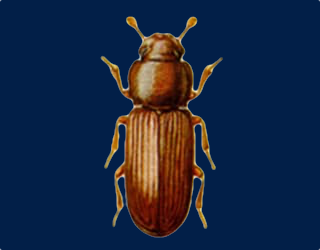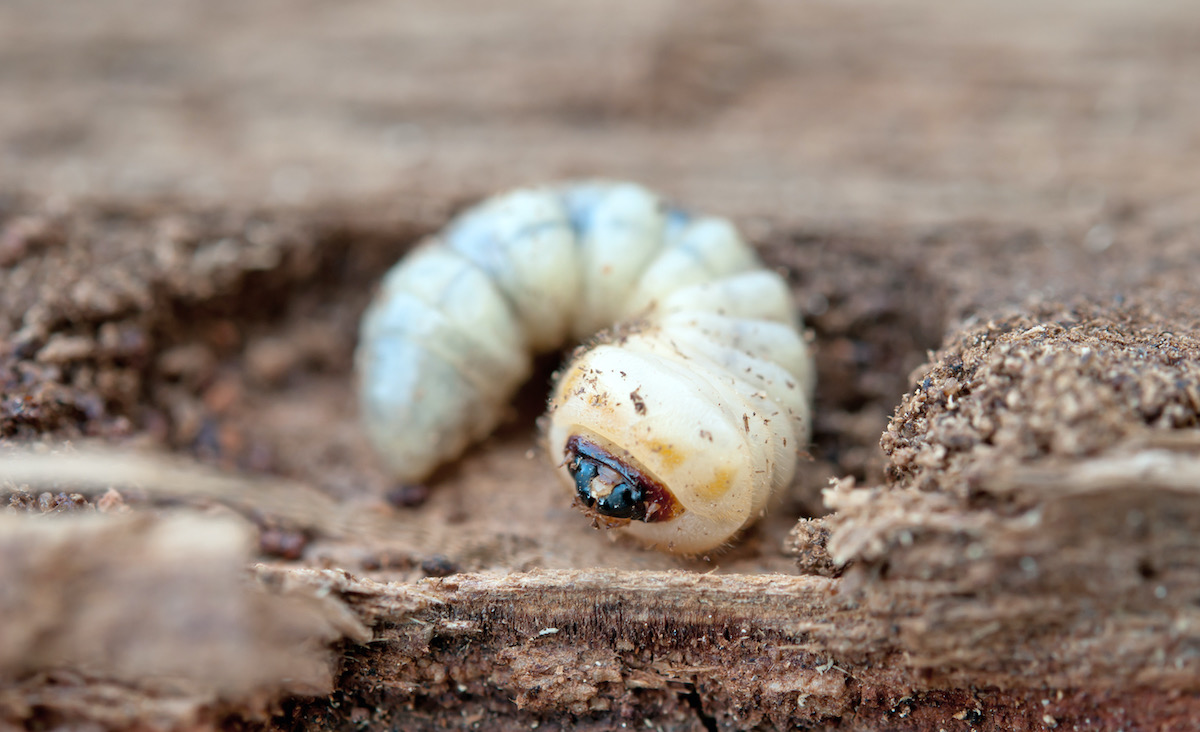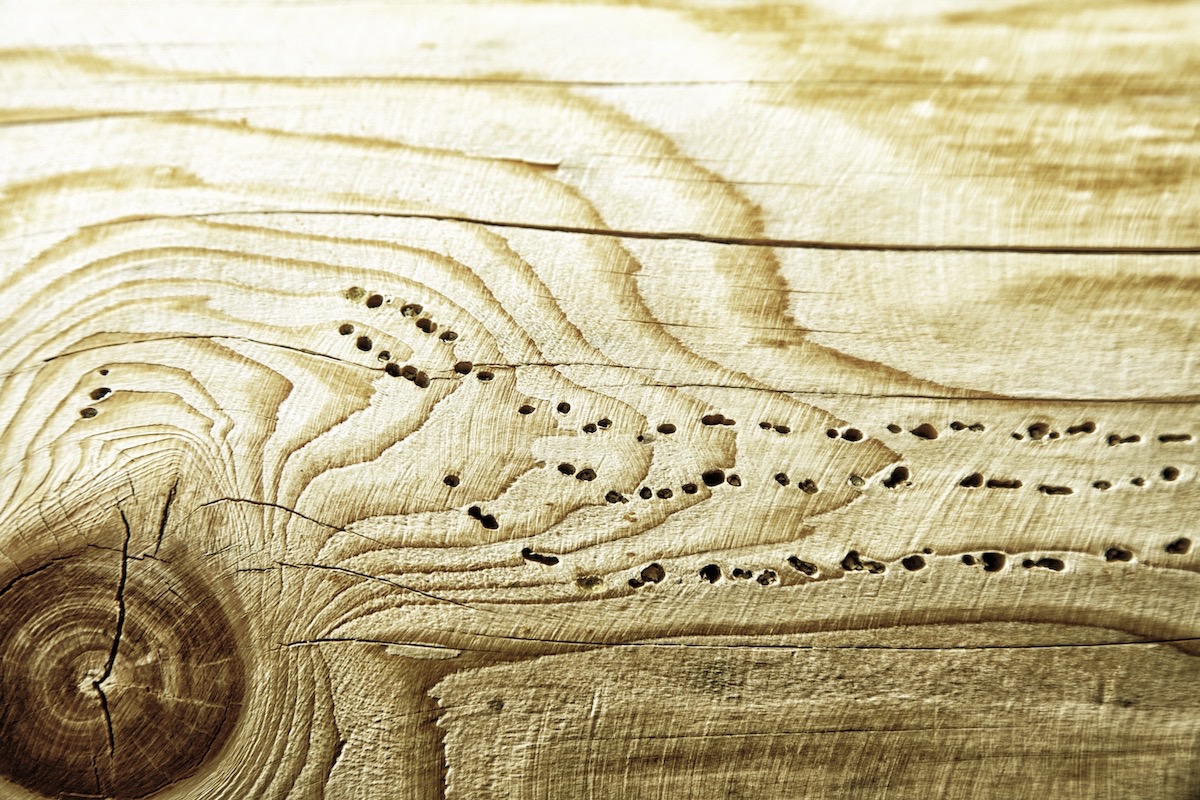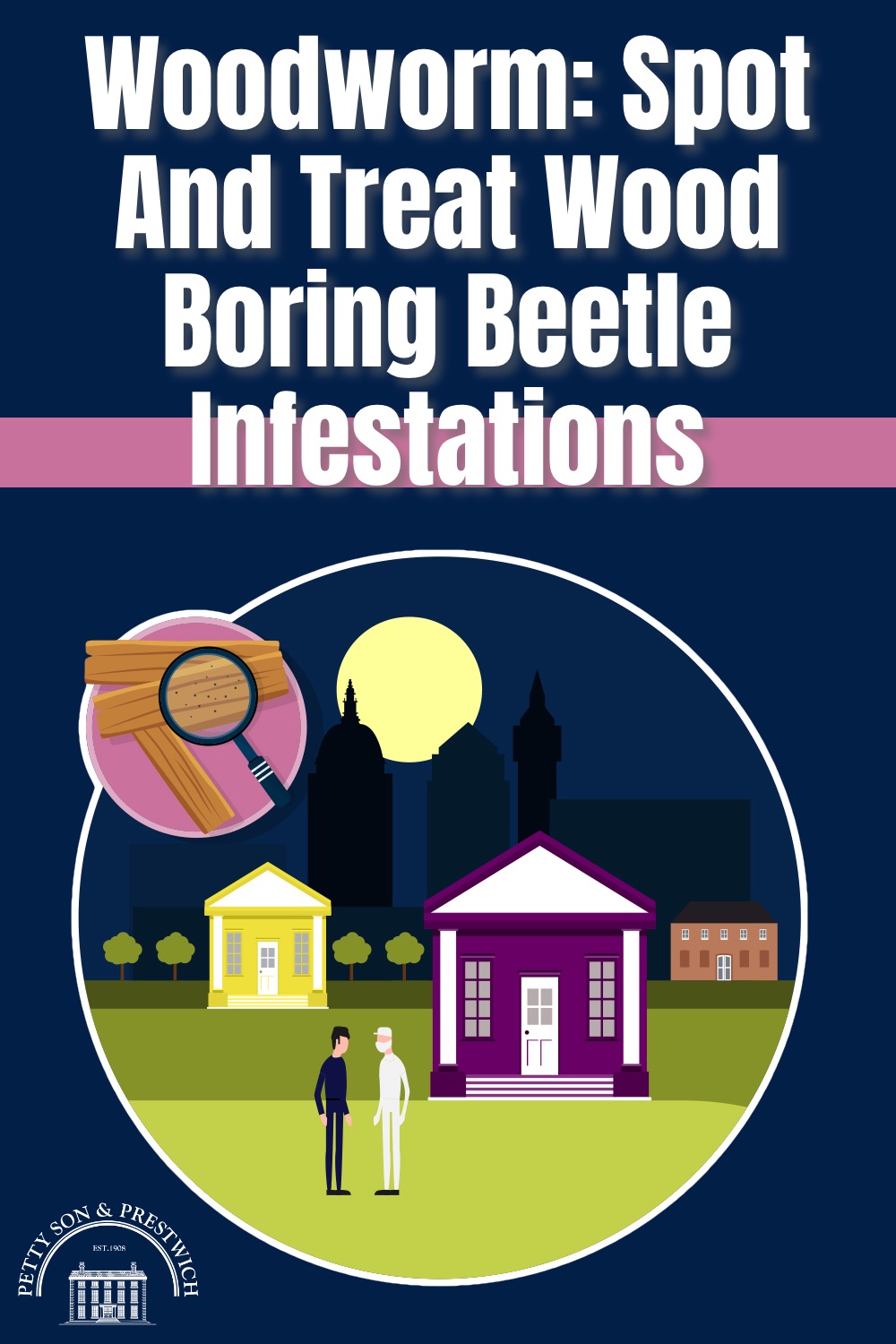In a world filled with plastic, metal, and composites, woodworm may seem like an old-fashioned issue that isn’t a problem in the modern home. The truth, however, is somewhat different.
Wood is still frequently used in construction and we’d wager that you have at least a couple of furniture pieces made from timber, albeit beautified and fashioned into a practical object such as a table, sideboard, or cabinet.
Woodworm can, therefore, still prove to be a pest in the 21st century, and being able to spot and treat wood boring beetle infestations early might end up saving you a lot of time, money, and worry. With that in mind, today’s post is definitely one to read and share with others.
Let’s get to it, shall we?
What is woodworm?

Woodworm isn’t actually a worm at all; it’s the larval stage of a wood-boring insect, of which there are many different species. Here in the UK, the most frequently found is Anobium Punctatum, which is also known as the Common Furniture Beetle.
What do woodworms look like?

As they are the larvae of a beetle, woodworm look more like a cross between a maggot and a caterpillar than the earthworms you’ll find in the garden. While this may sound altogether yucky to some of you out there, you’ll be pleased to know that these little blighters are extremely tiny, with the fully grown adults of the common furniture beetle only reaching 2.7 - 4.5mm in length.
How to spot wood boring beetle infestations in the home

Despite their minute stature, woodworm can cause extensive damage if left to munch their way through your wooden goods. Thankfully, they don’t cover their tracks all that well, so spotting them is relatively easy.
Here’s what to look out for:
- Exit holes - One of the first signs people pick up on is the tiny holes the larvae leave behind when they exit the wood. These holes are usually around 2mm in diameter and resemble the holes made by a dart on a dartboard.
- Frass - This is the fine, powder-like dust found around areas of infestation and it’s actually the larvae’s waste matter. Lovely! Unsurprisingly, frass is usually found below, or surrounding, the aforementioned holes.
- Dead beetles - If you find a number of dead beetles around areas where wood is present, you may have a problem with woodworm. However, the presence of dead beetles doesn’t necessarily mean that you have an active woodworm infestation. Remember, the damage is done at the larval stage.
- Weakness in the wood - With any luck, you would have spotted the first two tell-tale signs early enough to avoid this stage. If not, crumbly edges, or other signs of damage, could be a sign of woodworm being present and demands further inspection. There could, of course, be something else wrong with your timber, such as rot, but a closer look for exit holes, tunnels, and/or frass will give you a better idea.
What should I do if I find woodworm in my wood?
If you spot any of the above tell-tale signs in your timber, it’s time to call in the professionals. Sure, the evidence could well be from an old woodworm infestation that is no longer active, but it’s not worth the risk.
A woodworm specialist will be able to determine whether or not the infestation is indeed active and identify the species involved. They will then move on to testing the affected timber and provide you with a suitable woodworm treatment plan to remove the critters from your furniture or structure.
How to prevent woodworm
Once you have gotten rid of the infestation, you’ll no doubt be keen not to find yourself in the same boat in the future, so finding out how to prevent woodworm will likely be on your to-do list. Fortunately, it’s not that difficult, and it’s something you should already be doing anyway if you want to prevent condensation building up in your home as well: heat and ventilate.
Woodworm thrive in high moisture environments, so ensure your home’s humidity levels are kept low at all times, but especially through the winter months where it can be tempting to keep your windows closed all day long.
You can even go a step further and check the moisture content of the wood inside your property by way of a moisture meter. These natty little devices are able to measure the amount of water within a piece of timber, which makes them ideal for our needs. A reading of 11% or lower will mean there’s very little chance of woodworm taking hold.
That’s it for another week - hopefully you’re not scratching too much! If you found this helpful and would like to receive more good stuff like this in your inbox, sign up for our weekly newsletter. We’ll send you our latest blog posts and a selection of our newest properties every Monday. Don’t miss out!
